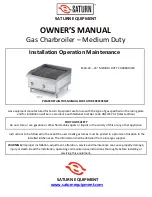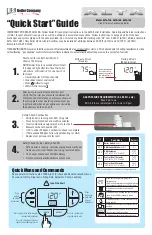
16
5
CONNECTING
5.1
Connecting CH installation
1.
Rinse the CH installation carefully.
2.
Fit the supply pipe (A) and return pipe (B) to the connection set.
3.
All pipes must be assembled with no electrical current, in order to prevent shocks
from the pipes.
4.
Existing connections may not be rotated, in order to prevent leakages.
The CH installation must be fitted with:
•
A filling/draining tap (A) in the return pipe, immediately underneath the unit.
•
A draining tap at the lowest point of the installation.
•
An overflow valve (B) of 3 bar in the input pipe at a distance of no more than 500 mm
from the unit.
Between the unit and the overflow valve there may be no valve or constriction.
•
An expansion vessel in the return pipe (in the B-pack or in the installation).
•
A check valve, if there are pipes running up, within close distance of the unit. This
prevents a thermo siphon effect from occurring during tap water operation (a non
spring-operated return valve, must be assembled vertically).
5.1.1
Thermostatic radiator taps
If all radiators are fitted with thermostatic or cable radiator taps, a minimum water
circulation must be safeguarded. See par. 7.4.
5.1.2
Underfloor heating
Underfloor heating distributor with pump
If an underfloor heating system is not hydraulically neutral, the underfloor heating
pump may generate unwanted circulation over the boiler. For a good functioning of
the domestic hot water provision, unwanted circulation over the boiler must be
prevented.
Connect an underfloor heating system indirectly hydraulically neutrally or provide the
CH installation with a two-way valve set 230 V ~ (E). If the underfloor heating pump
absorbs heat via the return of the boiler, unwanted circulation can be prevented by
means of a check valve (D).
Make sure there is a minimal water circulation. See par. 7.3.
Connection diagram underfloor heating
A.
Boiler
B.
Pump
C.
Thermostatic control valve
D.
Spring-operated check valve
E.
Electrical valve 230 V ~
F.
Radiators
G.
Space/clock thermostat
H.
Maximum thermostat
















































